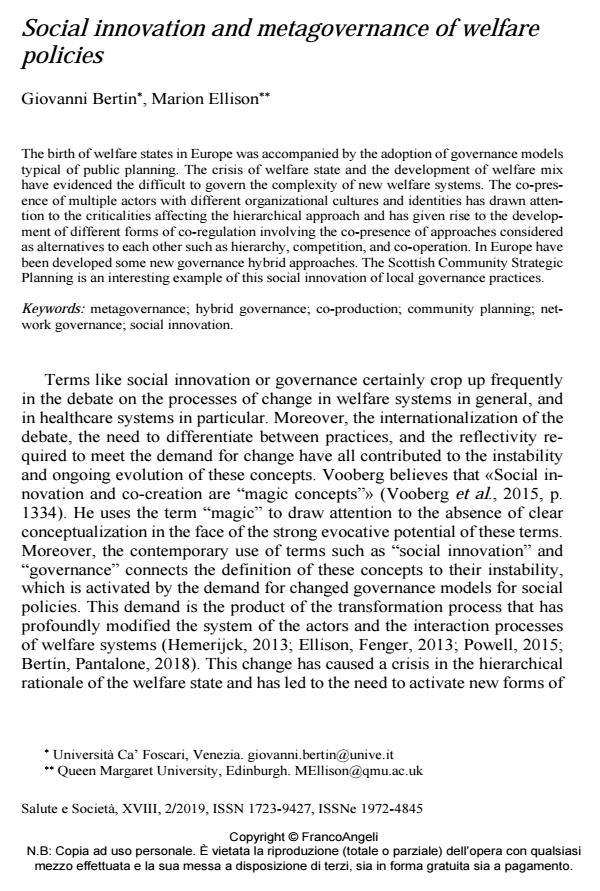Social innovation and metagovernance of welfare policies
Journal title SALUTE E SOCIETÀ
Author/s Giovanni Bertin, Marion Ellison
Publishing Year 2019 Issue 2019/2
Language Italian Pages 17 P. 40-56 File size 221 KB
DOI 10.3280/SES2019-002005
DOI is like a bar code for intellectual property: to have more infomation
click here
Below, you can see the article first page
If you want to buy this article in PDF format, you can do it, following the instructions to buy download credits

FrancoAngeli is member of Publishers International Linking Association, Inc (PILA), a not-for-profit association which run the CrossRef service enabling links to and from online scholarly content.
The birth of welfare states in Europe was accompanied by the adoption of governance models typical of public planning. The crisis of welfare state and the development of welfare mix have evidenced the difficult to govern the complexity of new welfare systems. The co-presence of multiple actors with different organizational cultures and identities has drawn attention to the criticalities affecting the hierarchical approach and has given rise to the development of differ-ent forms of co-regulation involving the co-presence of approaches considered as alternatives to each other such as hierarchy, competition, and co-operation. In Europe have been developed some new governance hybrid approaches. The Scottish Community Strategic Planning is an interesting example of this social innovation of local governance practices.
Keywords: Metagovernance; hybrid governance; co-production; community planning; network governance; social innovation.
- Social investment e innovazione sociale: il welfare europeo di fronte a una svolta? Maurizio Busacca, in SOCIOLOGIA E RICERCA SOCIALE 129/2023 pp.33
DOI: 10.3280/SR2022-129002
Giovanni Bertin, Marion Ellison, Social innovation and metagovernance of welfare policies in "SALUTE E SOCIETÀ" 2/2019, pp 40-56, DOI: 10.3280/SES2019-002005